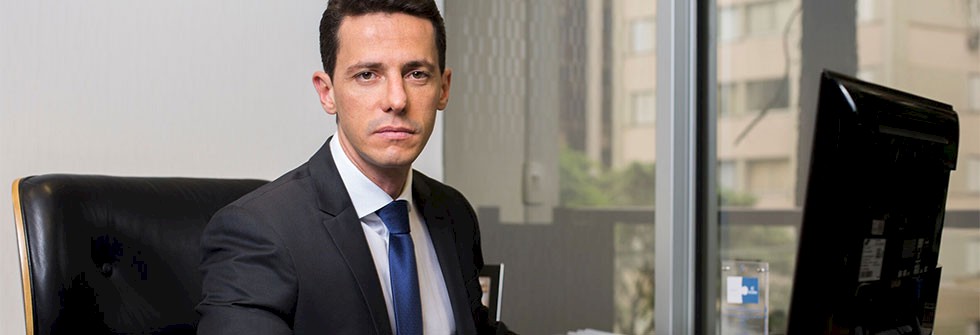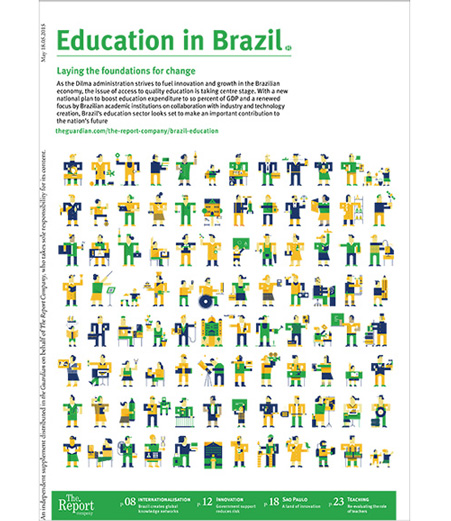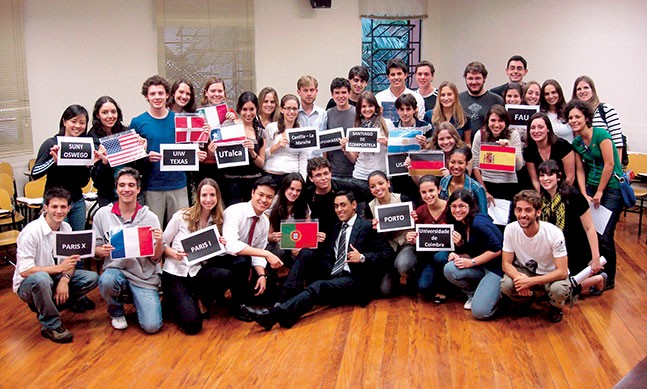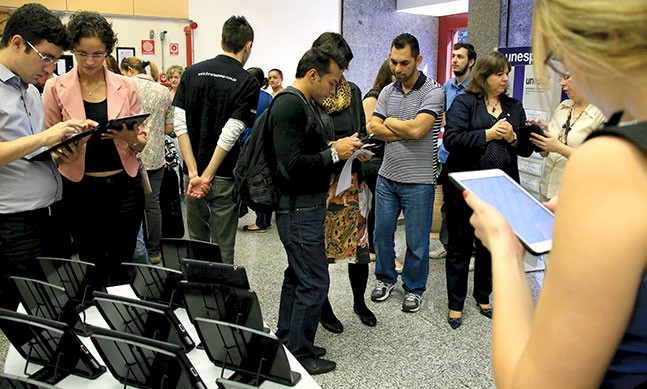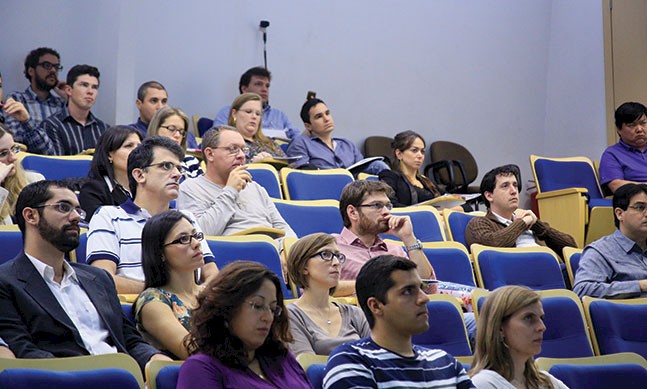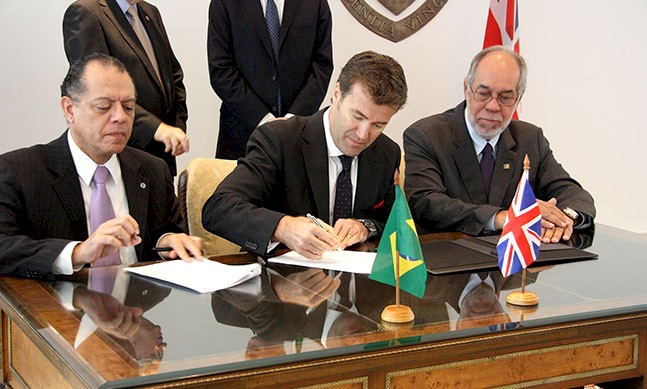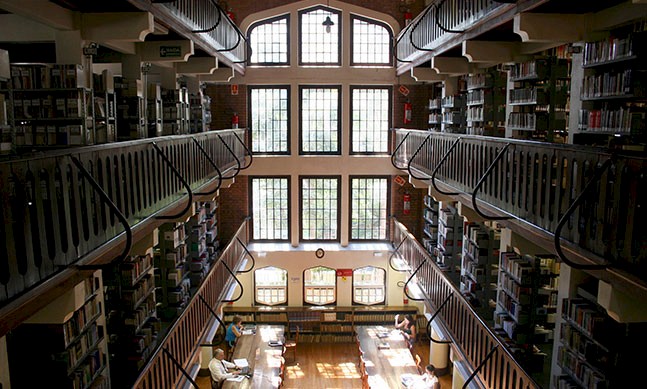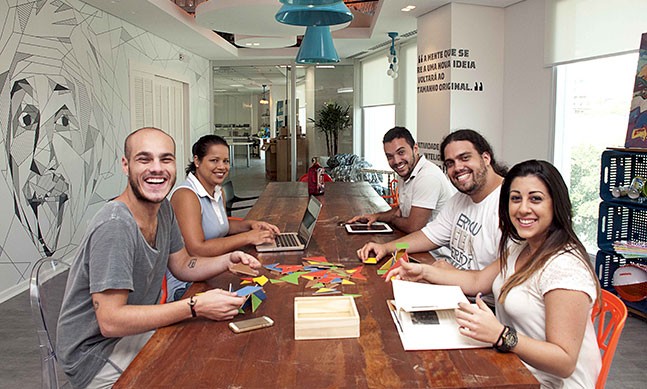Kroton Educacional became the largest educational company in the world by market capitalisation when it merged with another Brazilian giant of the sector, Anhanguera, in 2014. Today, it boasts around 1.5 million students across eleven brands that cover all levels of education. Company CEO Rodrigo Galindo explained to The Report Company why the current growth in the private education sector is critical to the future success of the country, as long as it succeeds in combining scale and quality in equal measure.
The Report Company: Is the idea that the private sector in Brazilian education seeks profits over performance a thing of the past?
Rodrigo Galindo: No, but it is much less prevalent than in the 1990s and early 2000s. When we established the first commercial department of a higher education institution at IUNI, it was considered a sin to commercialise the service we provided, but little by little we broke down those barriers.
Education is unlike any other product or service, but it does need to follow business-like premises. After the IPOs that begun in 2007, it became more common to talk about profits in educational institutions, but there is still a great resistance, especially from public universities. I believe that private universities need to respond with high-quality education and show to society that they are part of the solution, rather than the problem.
The low penetration of higher education in Brazil is the root of the problem, but public and private institutions have different challenges. It is unrealistic to expect an increase in that penetration purely through a public system, not least because studies show that those students cost between seven to ten times more than private ones. It is obvious that the training of the masses cannot take place through the public sector.
TRC: What is your take on the current state of education in Brazil?
RG: It is important here to step back slightly for some context. In the 1990s, the challenge was the universalisation of access to basic education – in which the country succeeded – and now around 96 percent of children are in school. That evolution is praiseworthy, but the quality of basic education remains very low and students still emerge with huge gaps in their knowledge.
I believe that the government made the right call when it chose to incentivise private education, something that all countries with good higher education penetration rates have done. According to a study by Itau BBA, government expenditure with the FIES student financing programme will peak in 2017 and stabilise in 2030, and the country will benefit enormously from that. What the government needs to do is ensure that these people have salary increases to pay for their program, otherwise it becomes unsustainable.
“I believe that the government made the right call when it chose to incentivise private education, something that all countries with good higher education penetration rates have done.”Tweet This
TRC: What has been Kroton's experience with internationalisation?
RG: We have been negotiating a few partnerships, especially in Moocs (Massive Open Online Courses), and we are closing a large partnership for non-regulated courses with international partners. Our focus is on innovation in all its forms, and internationalisation is a part of that.
At some point, probably in the next five to ten years, we will go through a revolution in the teaching/learning process. No one is expecting it, but we are the largest educational institution in the world so we have to drive the process. We created a vice-presidency of innovation and brought a CEO from a technology company and our goal is to plant the DNA of innovation in the company as a whole.
Having evaluated 55 companies across nine countries, all of whose main activity is education technology, we are betting on adaptive learning as the solution that will aggregate the most value to education. We already have three adaptive learning pilot projects here, involving more than 100,000 students, and will soon be able to evaluate the performances of those inside the project. Through questions and answers, the algorithm understands what each student needs and gives him or her more content on this or that. This means that each of our one million students can get individualised teaching plans and we get the benefits of scale without losing the benefits of customisation.
TRC: What is Kroton’s strategy for attracting future students and leading that expansion?
RG: Kroton now has both scale and capacity of investment in technology that can be applied to education. Few other companies have that. We also have an academic model which we call Kroton Learning System (KLS) that ensures a strong, large-scale teaching/learning process, the proof of which are our Enade results.
Plus, we have a top-class management team and a very strong meritocratic culture and a robust corporate governance structure which is not common in other higher education institutions in Brazil. We are the only company in the education sector that is a true corporation and our largest shareholder owns less than five percent of the company, so the interests of our investors do not influence us as much.
TRC: This recent period of consolidation has seen numerous mergers and acquisitions, but do you see that trend continuing over the next ten years?
RG: In Brazil, there are 2,400 educational institutions, 2,100 of which are private, so there is still a lot of room for consolidation. The vast majority of these institutions have 500-1000 students and are unlikely to be able to deliver education of a quality as high as that delivered by groups with a stronger management structure. Kroton continues evaluating the possibility of new acquisitions because this is a game we like to play and we know how to integrate. I would even go as far as say that our knowledge of integration processes is a major differential. We are preferably looking for assets in the north, northeast and central-west regions with strong brands. We believe that the brand is the most important asset of educational institutions.
TRC: How did the merger between Kroton and Anhanguera come about?
RG: At the end of 2000 and the beginning of 2001, my family realised we had to change something in Anhanguera. We were a family business, managed by family metrics, with no access to information and no management tools. Myself, two other family members and three outside managers formed a group to consider the professionalization of IUNI and from 2004 to 2007, we changed absolutely everything in the company; the academic model, the management systems, the processes; we downsized, reviewed syllabuses, and built a different company. In 2007, my father stepped out and I become the new CEO of the first well-structured, strong educational platform in the country.
Although we were not ready to do an IPO straight away in 2007 like many competitors did, we were ready to grow. Between 2007 and 2009, we made eight acquisitions and reached a point where we could either do an IPO, sell up or find a strategic partner and grow through it. We chose selling receiving a part on shares, that is, an association with a partner, so technically, Kroton bought us. It was a reverse takeover; IUNI’s processes ended up prevailing at the new organisation, and four months later I was invited to become CEO.
“Having evaluated 55 companies across nine countries, all of whose main activity is education technology, we are betting on adaptive learning as the solution that will aggregate the most value to education.”Tweet This
TRC: How will you innovate from here on, and what impact can you have on Brazilian education as a whole?
RG: We do not believe that a single department should produce innovation; innovation is a way of life, a state of mind. It is useless to have one department innovating if others are conservative, so we have been developing it throughout the entire company.
This is a team effort with 37,000 collaborators, and each one of them plays a fundamental role. I have no personal goals, I only share the team's goal to improve people’s lives by delivering high-quality education. Our students don't simply come here for knowledge, they want to change and improve their lives, grow in their careers, get a new job or higher wages so that is what we have to deliver, we have to ensure their employability.
For example, we created a platform called Canal Conecta that connects all Kroton students with openings in the job market. Through our evaluations, we are able to determine our students' technical and behavioural traits: are they leaders, are they proactive, are they analytical? Meanwhile, HR teams visit all the companies in the city and register their job openings into the system and the platform matches people with opportunities. It gives employers a list of candidates that fit the job and students can make an appointment for an interview through the platform. Equally, if all students are lacking a skill that the market is demanding, we know that the problem is in our syllabuses. This feeds into our academic model, so we can adjust it accordingly - I don’t know any other institution in the world that has a platform like that.
TRC: How do the Kroton brands fit together?
RG: Our brands had been created in different times and contexts, so they didn't match one another. Kroton is our corporate brand but does not offer education services directly, only through its brand portfolio: Anhanguera, Pitagoras, Unime, Unic, Fama, and so on. We do not need a single entity for the whole country. Nobody in Sao Paulo knows Unic for example, but it is one of the five most important brands in any sector of Mato Grosso; it has 65 percent market share and charges 15 percent more than its competitors. This premium service is what we want to provide.
TRC: What is the role of Kroton in the future of Brazil and how does that responsibility manifest itself?
RG: Our main job is to train human resources for the market. We also do high-quality research, but that is not our vocation. When we see our indicators showing an increase in our students' incomes, we know we are on the right track. Of course there are challenges and there is still a gap between private and public institutions. Although we already have the ability to deliver the same level of quality than public institutions, we are not satisfied and there is much to improve. Having 80 percent satisfactory grades still means that 20 percent are unsatisfactory, but we are on the right path.
“We are the only company in the education sector that is a true corporation and our largest shareholder owns less than five percent of the company, so the interests of our investors do not influence us as much.”Tweet This


